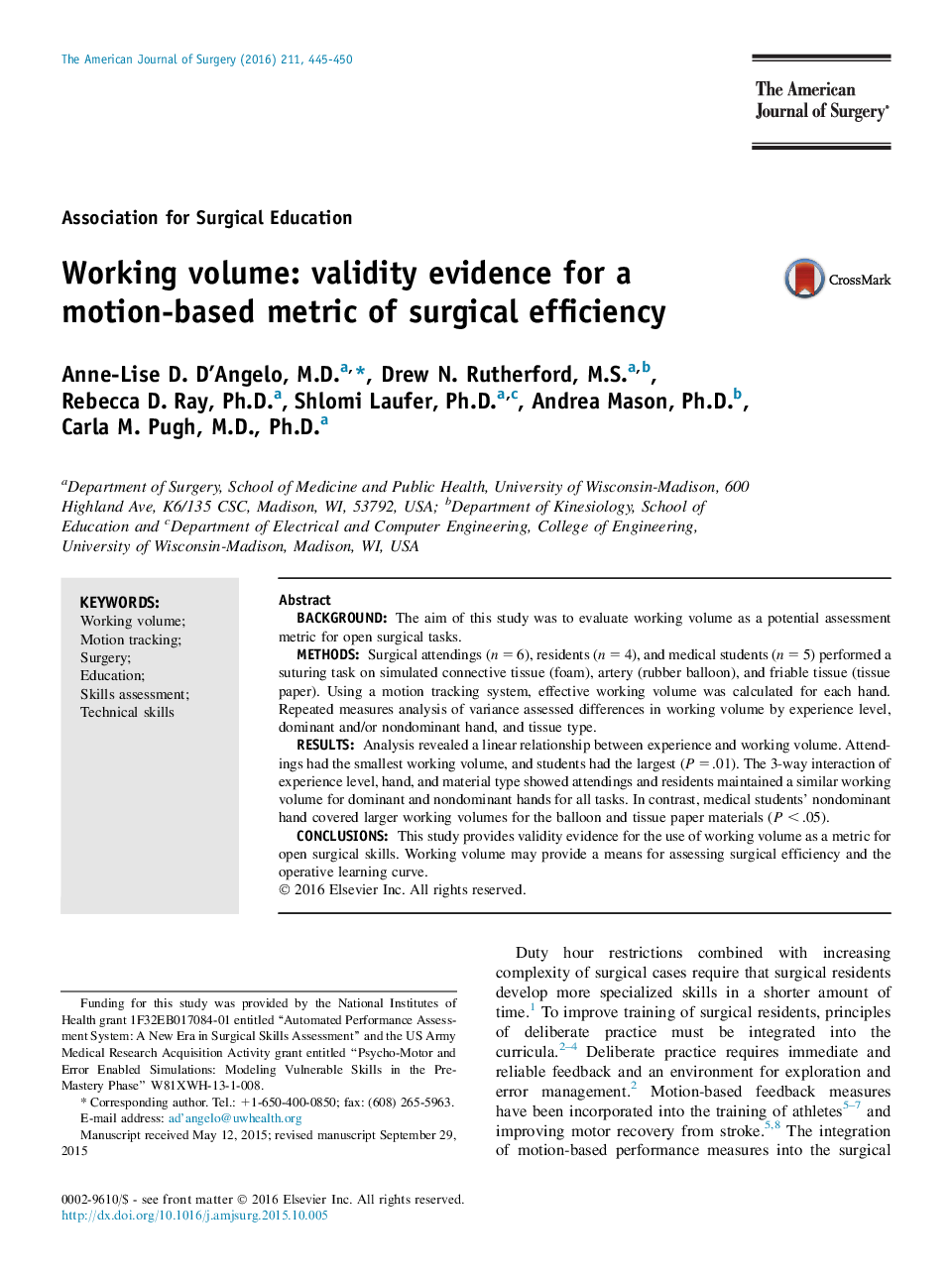| Article ID | Journal | Published Year | Pages | File Type |
|---|---|---|---|---|
| 4278164 | The American Journal of Surgery | 2016 | 6 Pages |
BackgroundThe aim of this study was to evaluate working volume as a potential assessment metric for open surgical tasks.MethodsSurgical attendings (n = 6), residents (n = 4), and medical students (n = 5) performed a suturing task on simulated connective tissue (foam), artery (rubber balloon), and friable tissue (tissue paper). Using a motion tracking system, effective working volume was calculated for each hand. Repeated measures analysis of variance assessed differences in working volume by experience level, dominant and/or nondominant hand, and tissue type.ResultsAnalysis revealed a linear relationship between experience and working volume. Attendings had the smallest working volume, and students had the largest (P = .01). The 3-way interaction of experience level, hand, and material type showed attendings and residents maintained a similar working volume for dominant and nondominant hands for all tasks. In contrast, medical students' nondominant hand covered larger working volumes for the balloon and tissue paper materials (P < .05).ConclusionsThis study provides validity evidence for the use of working volume as a metric for open surgical skills. Working volume may provide a means for assessing surgical efficiency and the operative learning curve.
